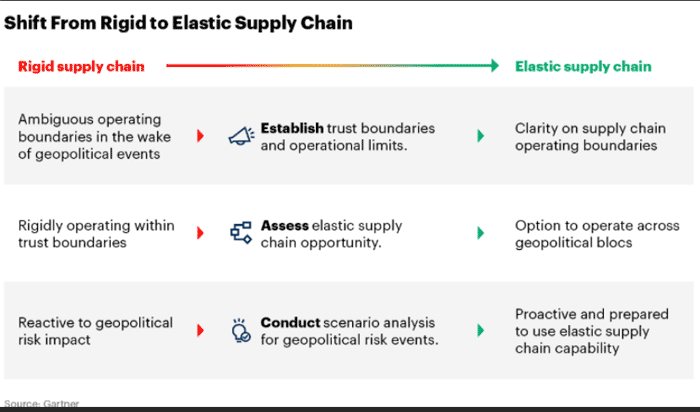In the continuing quest by many companies to improve supply chain resilience they often focus too much on technology and related capabilities, and not enough on the real key: people.
She offers four recommendations for supply chain leaders to help their teams navigate the complex operating landscape:
Define boundaries instead of fixed rules: Create an elastic supply chain by empowering your team to operate within established boundaries and limits. Encourage them to discuss scenarios and work in an option-based environment, as always striving for precision is challenging, if not exhausting.
Cultivate a supportive environment: Foster a culture where employees feel safe to express concerns, ask questions, share ideas or voice challenges early on. Organizations that recognize employee well-being as a fundamental pillar of achieving business objectives will thrive. For instance, recent surveys show that the top three initiatives to support well-being, especially in remote settings, are virtual mental health support, access to wellness apps and mental health self-care apps.
Invest in training and development: Two common issues are that there's never a convenient time to train the team due to ongoing projects and operations, and that we often expect our teams to learn by doing, which is fine but fairly difficult without proper guidance. Investing in structured training and development is crucial.
Foster a risk-taking mindset: According to that recent Supply Chain User Wants and Needs Survey, 37% of respondents still exhibit a risk-averse mindset. There's much to be done in creating an environment in which taking risks, occasionally failing, but just as often succeeding, is acceptable. This approach benefits both innovation and productivity, supporting the development of resilience within the team.
Related principles for moving from a rigid to a more elastic supply chain are illustrated in the graphic below from Gartner:

(See More Below)
|
CATEGORY SPONSOR: SOFTEON |
|
|
| |
| |
|
|
“I urge you to focus not only on making the supply chain itself resilient but also on fostering an open, risk-taking environment and nurturing a supportive atmosphere within your teams,” McCarthy concludes, adding that “Encourage them to invest time in training and development. Otherwise, we risk ending up with resilient supply chains but no teams capable of making decisions.”
Any comments on Gartner’s comments on resilience? Let us know your thoughts at the Feedback section below.
|